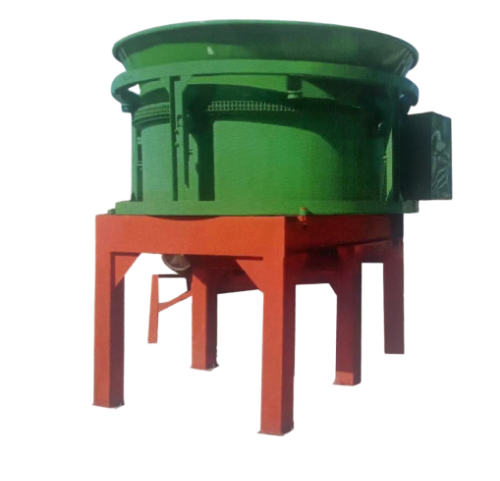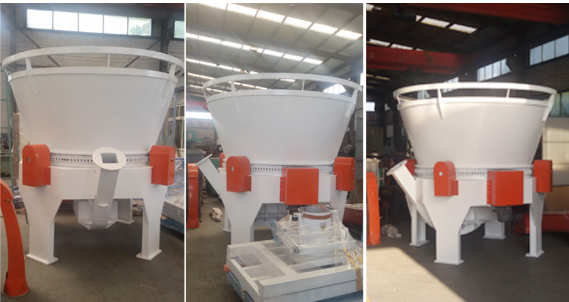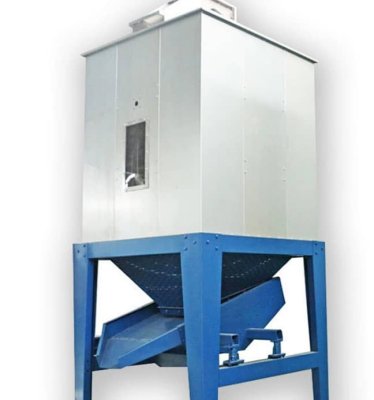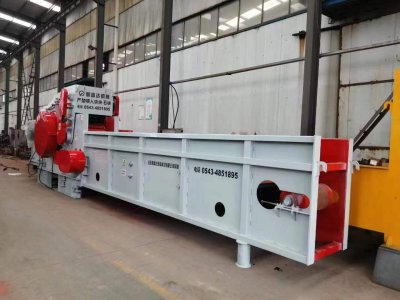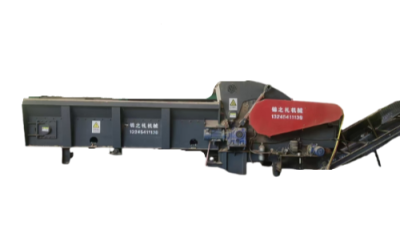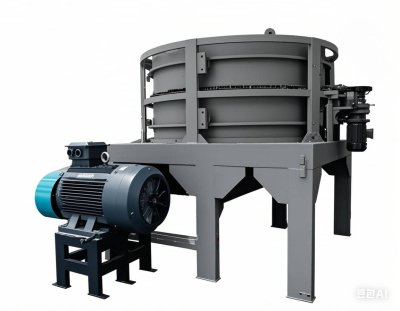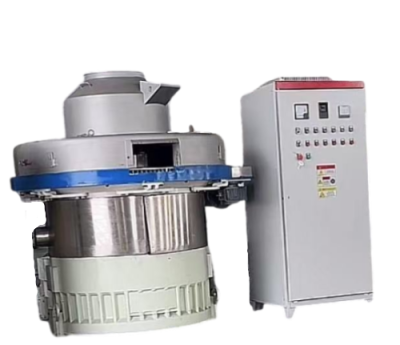Rotary Cutting Crusher
Advantages Introduction:
Large - diameter Feeding
Available in 2000mm, 2500mm, and 3000mm feeding diameters, it allows easy intake of piled or bundled materials like straw and forage. With an approximately 1 - meter - high feeding port, it enables large - volume single - feed processing. It features intermittent feeding, continuous crushing, and spraying discharge. The rotating feeding port drives materials to the crusher rotor for continuous pulverization, reducing worker labor. Post - crushing, materials are ejected at high - speed by rotor centrifugal force, eliminating the need for conveying equipment.
Core Components of Integrated Crushing Equipment
The disc cutters and hammer blades on the crushing rotor are the core. Large materials are first cut into smaller pieces by disc cutters and then further crushed by hammer blades, enhancing crushing efficiency.
Wear - resistant and Tough Alloy Core Components
Cutting knives and hammer blades are made of tough, impact - resistant alloys. Disc cutters are highly hard and wear - resistant. Hammer blades have super wear - resistant cemented carbide welded on both edges, significantly extending their service life.
Product Description of Rotary Cutting Crusher
1.General Overview
The Rotary Cutting Crusher, an outstanding high - performance device, is specifically engineered to meet the material crushing requirements of numerous industries. It demonstrates remarkable performance in processing agricultural materials and biomass materials, being committed to achieving efficient and precise crushing operations.
2. Crushing Range
Its crushing capacity encompasses an extremely wide range of materials. It can efficiently handle various fibrous scale - like materials such as thatch, corn stalks, and sorghum stalks. Through professional crushing techniques, these materials are finely ground into a uniform powder, fully satisfying diverse production demands. Precisely for this reason, this equipment has become the top choice for industries related to crop straw processing and plays an indispensable role in key fields such as straw - based fuel production and biomass power generation.
3. Feeding System
Large - diameter Feeding Design
The feeding port diameter is set in three practical specifications: 2000mm, 2500mm, and 3000mm. This innovative design greatly facilitates the feeding operation of materials in piles or bundles. Whether it is a large amount of straw stacked in the field or tightly - packed bales of forage, the equipment can easily accept them, effectively improving the feeding efficiency.
The feeding port is approximately 1 meter high, allowing for a considerable single - feeding volume. It adopts an intermittent feeding mode but can achieve continuous and uninterrupted crushing and spraying discharge. The unique rotating structure of the feeding port can skillfully push the materials to the crusher rotor, ensuring that the materials are continuously and stably crushed into a powder state. This significantly reduces the labor intensity of workers in feeding and optimizes the entire crushing process, enhancing the operation efficiency.
After being crushed, the materials are ejected from the discharge port at high speed under the strong centrifugal force of the rotor. In most application scenarios, there is no need to equip additional conveying equipment, further simplifying the production process and reducing operating costs.
4. Core Components
Disc Cutters and Hammer Blades
The disc cutters and hammer blades installed on the crusher rotor are the core "heart" of the equipment operation. During the production process, large - volume materials are first cut by the disc cutters for the initial division, breaking them into smaller and more manageable volumes, laying the foundation for subsequent crushing operations.
Subsequently, the hammer blades quickly intervene to deeply crush the materials that have been cut initially. Through this step - by - step collaborative operation method, the overall crushing efficiency is greatly improved, ensuring that the quality of the final output materials fully meets high - standard requirements.
Supplementary Explanations
Fixing - related
Fixing with cement is suitable for long - term fixed - operation scenarios, providing stable support. An angle - steel base is convenient for movement and is suitable for situations where the working location needs to be changed. During installation, ensure that the base is level and stable to prevent the machine from vibrating and shifting.
Material Inspection
If hard objects enter the crushing chamber, they may damage components such as blades and screens, and may even cause the equipment to get stuck, the motor to over - load and burn out. It may also lead to safety accidents such as component splashing. Therefore, foreign objects in the materials should be removed in advance.
Pre - start Inspection
Idle Running
Idle running enables all components of the equipment to enter a good operating state, (run - in the operating parts), and detect potential problems in advance, such as belt deviation and abnormal vibration, to prevent the expansion of faults during material - feeding operation.
Pulley Replacement
The diameter of the pulley determines the equipment's rotational speed. Arbitrary replacement will change the speed. If the speed is too high, equipment wear will intensify, potentially causing fatigue damage to components and excessive crushing of materials. If the speed is too low, the crushing efficiency will be low and materials are likely to get blocked.
Emergency Shutdown in Case of Abnormalities
Unusual noises may be due to component looseness, wear, or foreign objects entering. Excessively high bearing temperature may be caused by poor lubrication, improper installation, or excessive load. Material spraying outwards may be due to a damaged screen or excessive feeding speed. Shut down the machine in time for inspection to prevent the deterioration of faults.
Shutdown Operation
Stopping the material - feeding first can prevent materials from remaining in the machine, which may cause difficulties in the next start - up or blockages. Cutting off the power supply after all materials are discharged can reduce the starting load of the motor, protect the equipment, and extend its service life.
Maintenance
Clean the bearings and change the lubricating oil after 300 hours of operation. This can remove oil stains and impurities, ensure good lubrication and heat dissipation of the bearings, and extend the service life of both the bearings and the entire machine. When maintaining, pay attention to selecting qualified oil products and operating in accordance with specifications.
